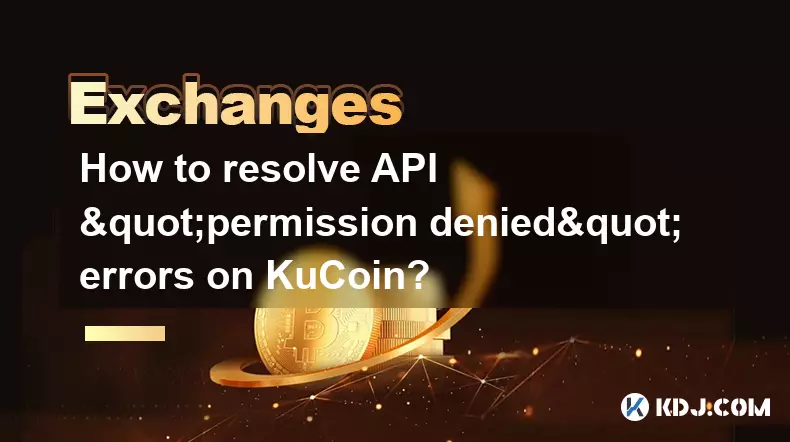-
 Bitcoin
Bitcoin $108100
-0.53% -
 Ethereum
Ethereum $4406
-0.85% -
 Tether USDt
Tether USDt $0.0000
0.00% -
 XRP
XRP $2.736
-3.29% -
 BNB
BNB $854.1
-0.62% -
 Solana
Solana $199.2
-2.23% -
 USDC
USDC $0.9998
-0.01% -
 TRON
TRON $0.3379
-1.08% -
 Dogecoin
Dogecoin $0.2113
-2.94% -
 Cardano
Cardano $0.8044
-2.83% -
 Chainlink
Chainlink $22.94
-3.31% -
 Hyperliquid
Hyperliquid $44.27
-1.09% -
 Ethena USDe
Ethena USDe $1.001
0.03% -
 Sui
Sui $3.192
-3.56% -
 Stellar
Stellar $0.3491
-3.11% -
 Bitcoin Cash
Bitcoin Cash $534.3
-2.79% -
 Avalanche
Avalanche $23.11
-3.16% -
 Cronos
Cronos $0.2785
-5.59% -
 Hedera
Hedera $0.2141
-4.96% -
 UNUS SED LEO
UNUS SED LEO $9.590
0.14% -
 Litecoin
Litecoin $108.6
-2.13% -
 Toncoin
Toncoin $3.130
-0.08% -
 Shiba Inu
Shiba Inu $0.00001204
-2.84% -
 Polkadot
Polkadot $3.711
-2.52% -
 Uniswap
Uniswap $9.469
-3.39% -
 Dai
Dai $0.9999
0.00% -
 Bitget Token
Bitget Token $4.511
-1.41% -
 Monero
Monero $263.9
0.15% -
 Aave
Aave $310.7
-3.13% -
 Ethena
Ethena $0.6331
-6.76%
How to resolve API "permission denied" errors on KuCoin?
API permission denied errors on KuCoin often stem from IP whitelist mismatches, incorrect permissions, expired keys, or time synchronization issues—verify settings to resolve.
Aug 31, 2025 at 09:18 pm

Understanding API Permission Denied Errors on KuCoin
1. API 'permission denied' errors on KuCoin typically occur when the system rejects a request due to insufficient or misconfigured access rights. These errors are not random; they stem from specific security and configuration settings tied to the user's API key and permissions.
2. One of the most common triggers is an incorrect IP whitelist setting. KuCoin requires that any API call originate from an IP address listed in the API’s whitelist. If the request comes from an unregistered IP, the server automatically denies access.
3. Another frequent cause is mismatched permissions assigned to the API key. Users must explicitly grant permissions such as 'Reading,' 'Trade,' or 'Withdrawal' during API creation. Attempting to execute a trade using a read-only key will result in a permission error.
4. Expired or deactivated API keys can also lead to denial responses. KuCoin does not automatically renew keys, and if a key has been manually disabled or surpassed its validity period, all associated requests will fail.
5. Time synchronization issues between the client and server can trigger false permission denials. KuCoin uses timestamp verification as part of its API security protocol. A system clock that is significantly off can cause the server to reject the request as unauthorized.
Steps to Fix IP Whitelisting Issues
1. Log in to your KuCoin account and navigate to the API management section under the security settings.
2. Locate the API key you are using and check the 'Whitelist IPs' field. If it is empty or does not include the IP address from which you are making the request, that is likely the source of the error.
3. Add your current public IP address to the whitelist. You can find your public IP by searching 'What is my IP' on any major search engine.
4. For dynamic IPs, consider using a static IP service or update the whitelist regularly. Some developers opt to allow all IPs by entering 0.0.0.0/0, but this is highly discouraged due to security risks.
5. After updating the whitelist, wait a few minutes for the changes to propagate and test the API call again.
Configuring Correct API Permissions
1. When creating or editing an API key, KuCoin presents a checklist of permissions. Ensure that the required permissions align with your intended use—reading account data, placing orders, or managing funds.
2. For trading bots or automated systems, the 'Trade' permission must be enabled. Without it, any order-related endpoint will return a permission denied response.
3. Withdrawal operations require explicit withdrawal permission, which is disabled by default. Enabling this should be done cautiously and only when necessary.
4. Avoid granting all permissions unless absolutely required. Limiting access reduces the potential damage if the API key is compromised.
5. After adjusting permissions, regenerate the API key if changes cannot be applied to an existing one. Old keys with outdated permissions should be deleted to prevent accidental use.
Handling Time and Authentication Synchronization
1. KuCoin’s API uses HMAC-SHA256 signatures and requires a timestamp with each request. If your local system clock is off by more than 30 seconds, the signature validation fails.
2. Use Network Time Protocol (NTP) services to synchronize your device’s clock with standard time servers. On Linux, this can be done with commands like ntpdate pool.ntp.org.
3. When constructing the API request, ensure the timestamp is in milliseconds and reflects the current UTC time.
4. Double-check the signature generation process. Errors in concatenating the request path, body, and timestamp can mimic permission issues even when credentials are correct.
5. Use KuCoin’s public time endpoint GET /api/v1/timestamp to retrieve the server’s current time and compare it with your local clock for debugging.
Frequently Asked Questions
What should I do if my API key is stolen?Immediately log in to KuCoin, navigate to the API management section, and delete the compromised key. Create a new one with minimal required permissions and update your applications accordingly. Enable two-factor authentication for additional protection.
Can I use the same API key across multiple devices?Yes, but only if all devices’ IP addresses are included in the whitelist. Each request must also comply with the assigned permissions. However, using separate keys per device enhances security and simplifies tracking.
Why does my API work sometimes but fail at other times?This inconsistency often points to a dynamic IP address not fully covered by the whitelist or intermittent clock drift. It may also occur if certain endpoints require higher permissions than others, and the key lacks full access.
Is it safe to allow all IP addresses for API access?No. Allowing 0.0.0.0/0 removes IP-based protection, making your API key vulnerable to misuse from any location. Always restrict access to known, trusted IPs to maintain account security.
Disclaimer:info@kdj.com
The information provided is not trading advice. kdj.com does not assume any responsibility for any investments made based on the information provided in this article. Cryptocurrencies are highly volatile and it is highly recommended that you invest with caution after thorough research!
If you believe that the content used on this website infringes your copyright, please contact us immediately (info@kdj.com) and we will delete it promptly.
- Memecoins September 2025 Watchlist: What's Hot Now?
- 2025-08-31 23:25:15
- Eric Trump Predicts Bitcoin to $1 Million: Hype or Reality?
- 2025-08-31 23:25:15
- BlockDAG: Redefining Scalability and ROI Potential in 2025
- 2025-08-31 23:05:16
- Ozak AI, Altcoins, and 20x Potential: Navigating the Crypto Landscape
- 2025-09-01 00:05:12
- Bonk Price, Solana Meme Coin, and the Rise of Layer Brett: A New Era?
- 2025-08-31 21:25:12
- ETH Transactions Soar, BTC Whale Shifts Gears: Decoding August's Crypto Charts
- 2025-08-31 21:05:16
Related knowledge

How to create a sub-account on Binance?
Sep 01,2025 at 12:36am
Accessing the Binance Sub-Account Feature1. Log in to your Binance account using your registered email and password. Ensure that two-factor authentica...

How to use the Binance portfolio tracker?
Sep 01,2025 at 01:00pm
Understanding the Binance Portfolio Tracker1. The Binance portfolio tracker is a powerful tool designed to help users monitor their cryptocurrency inv...

How to trade a new coin listing on Binance?
Aug 29,2025 at 11:14am
Understanding the Pre-Listing Phase1. Research the project thoroughly before any listing announcement. Whitepapers, team backgrounds, and community se...

How to use the Binance testnet?
Aug 31,2025 at 02:19am
Understanding the Binance Testnet Environment1. The Binance testnet is a simulated version of the Binance Smart Chain (BSC) that allows developers and...

How to trade with USDT on Binance?
Aug 30,2025 at 02:19am
Getting Started with USDT Trading on Binance1. Create and verify your Binance account. Visit the official Binance website and complete the registratio...

How to trade with BUSD on Binance?
Aug 30,2025 at 07:42am
Understanding BUSD and Its Role in Binance Trading1. BUSD, or Binance USD, is a stablecoin pegged to the value of the U.S. dollar, meaning 1 BUSD is a...

How to create a sub-account on Binance?
Sep 01,2025 at 12:36am
Accessing the Binance Sub-Account Feature1. Log in to your Binance account using your registered email and password. Ensure that two-factor authentica...

How to use the Binance portfolio tracker?
Sep 01,2025 at 01:00pm
Understanding the Binance Portfolio Tracker1. The Binance portfolio tracker is a powerful tool designed to help users monitor their cryptocurrency inv...

How to trade a new coin listing on Binance?
Aug 29,2025 at 11:14am
Understanding the Pre-Listing Phase1. Research the project thoroughly before any listing announcement. Whitepapers, team backgrounds, and community se...

How to use the Binance testnet?
Aug 31,2025 at 02:19am
Understanding the Binance Testnet Environment1. The Binance testnet is a simulated version of the Binance Smart Chain (BSC) that allows developers and...

How to trade with USDT on Binance?
Aug 30,2025 at 02:19am
Getting Started with USDT Trading on Binance1. Create and verify your Binance account. Visit the official Binance website and complete the registratio...

How to trade with BUSD on Binance?
Aug 30,2025 at 07:42am
Understanding BUSD and Its Role in Binance Trading1. BUSD, or Binance USD, is a stablecoin pegged to the value of the U.S. dollar, meaning 1 BUSD is a...
See all articles

























































































